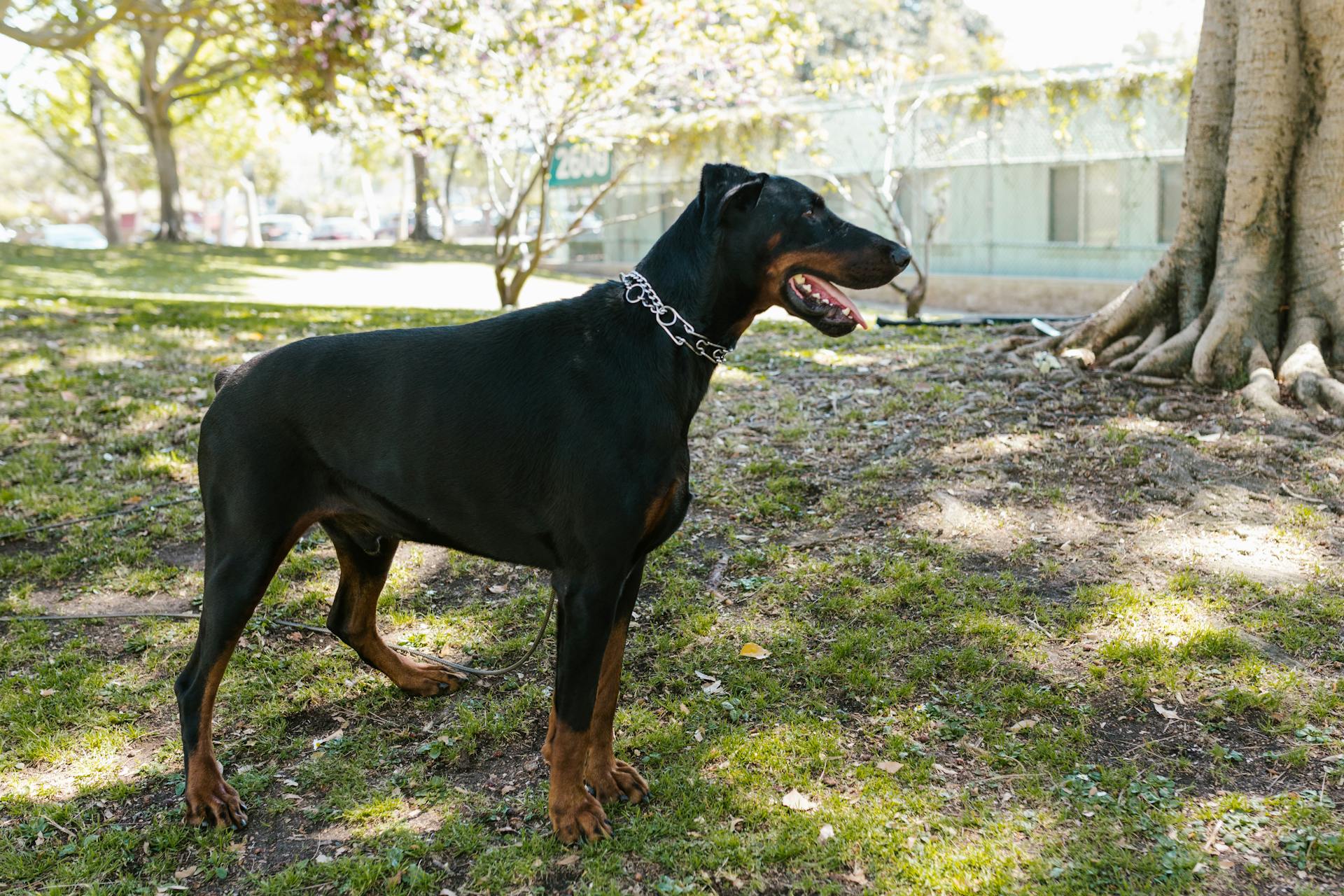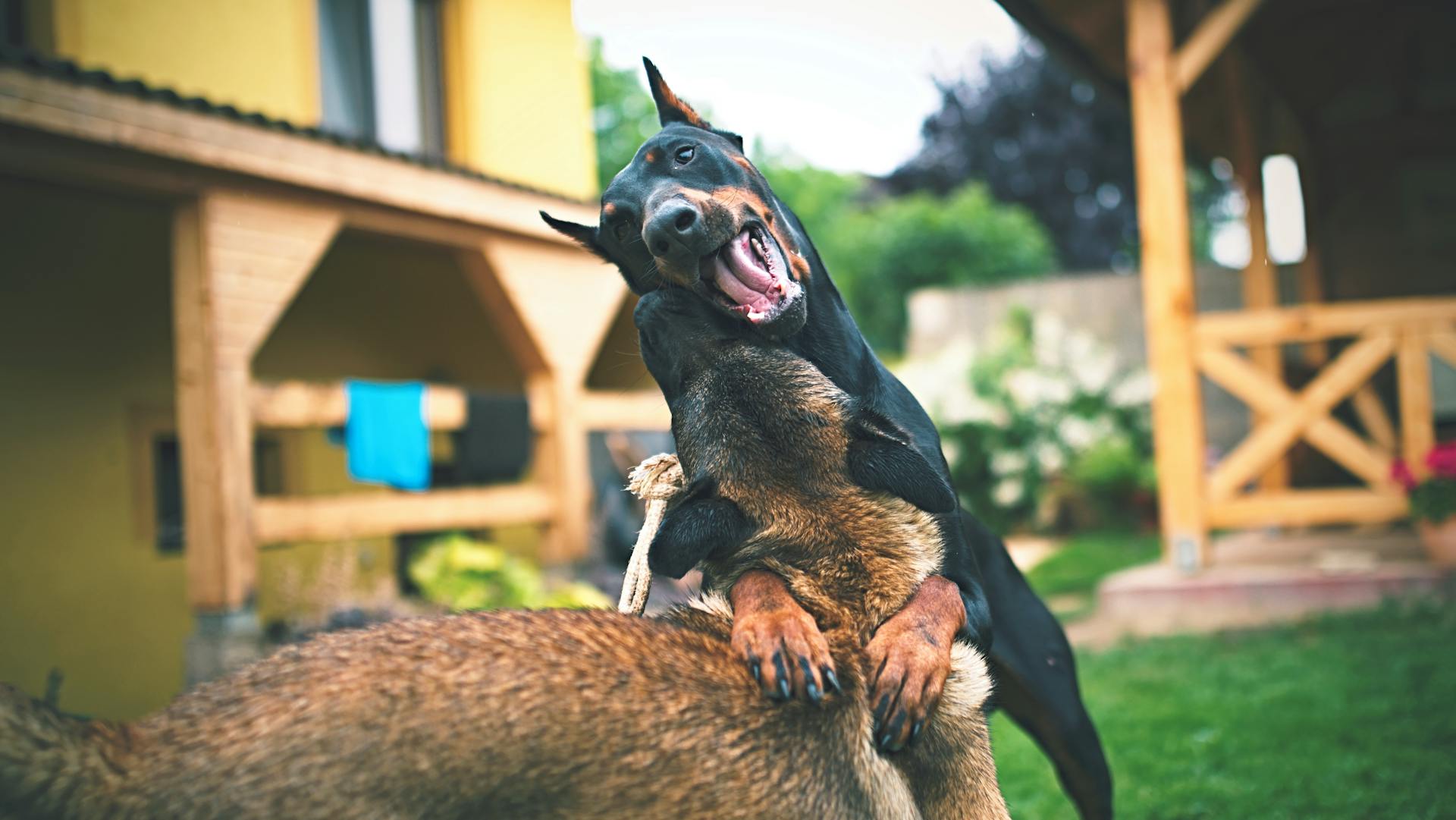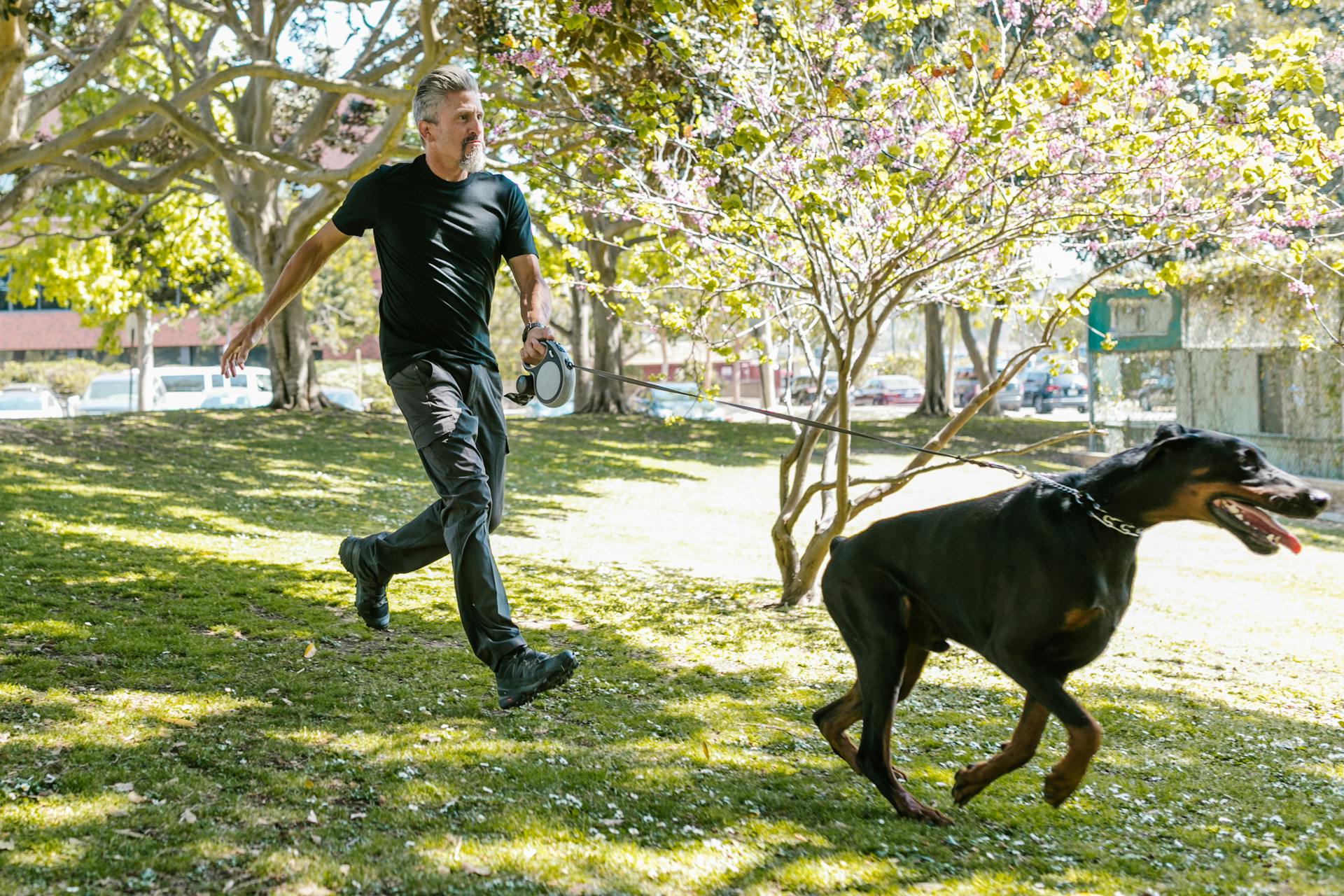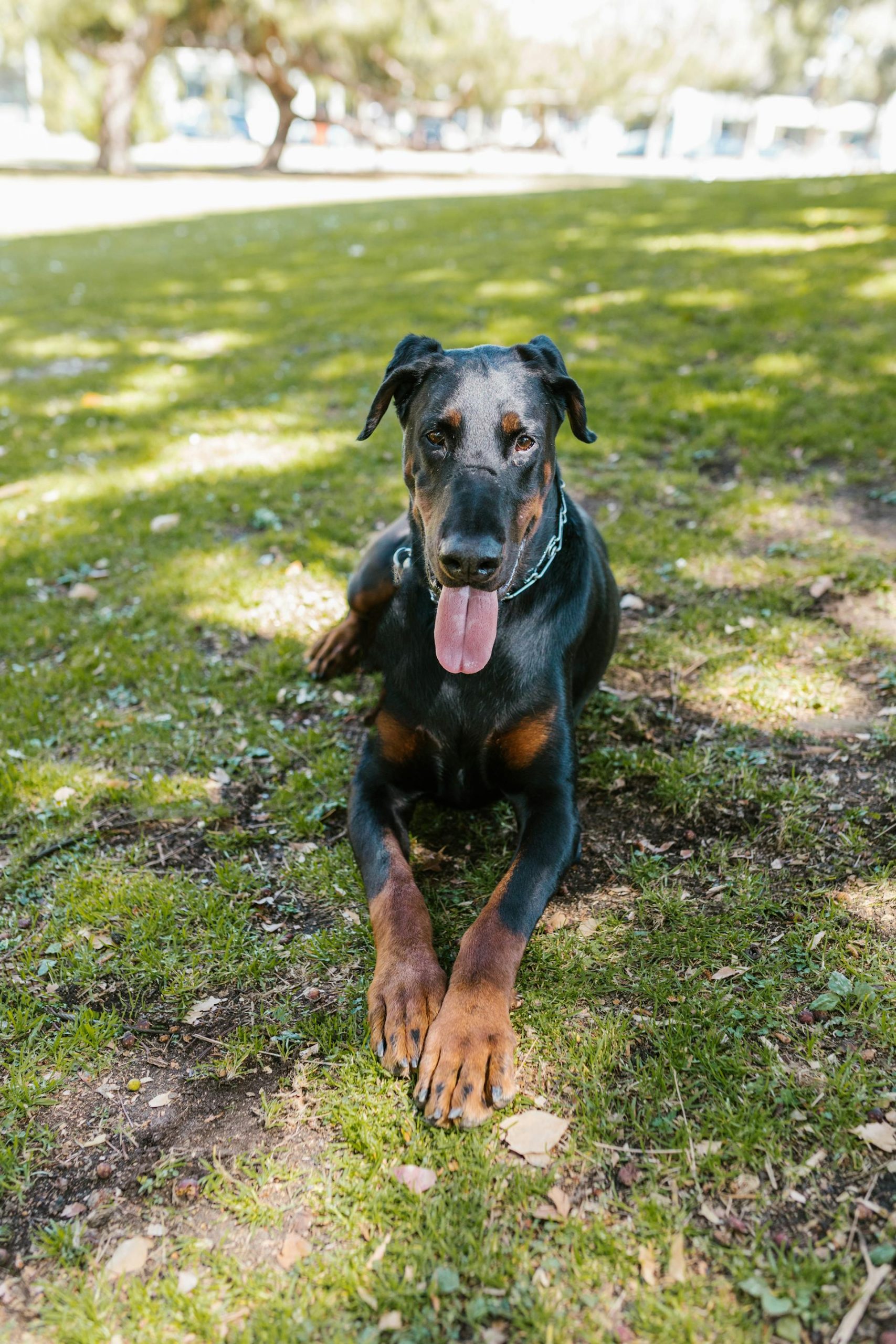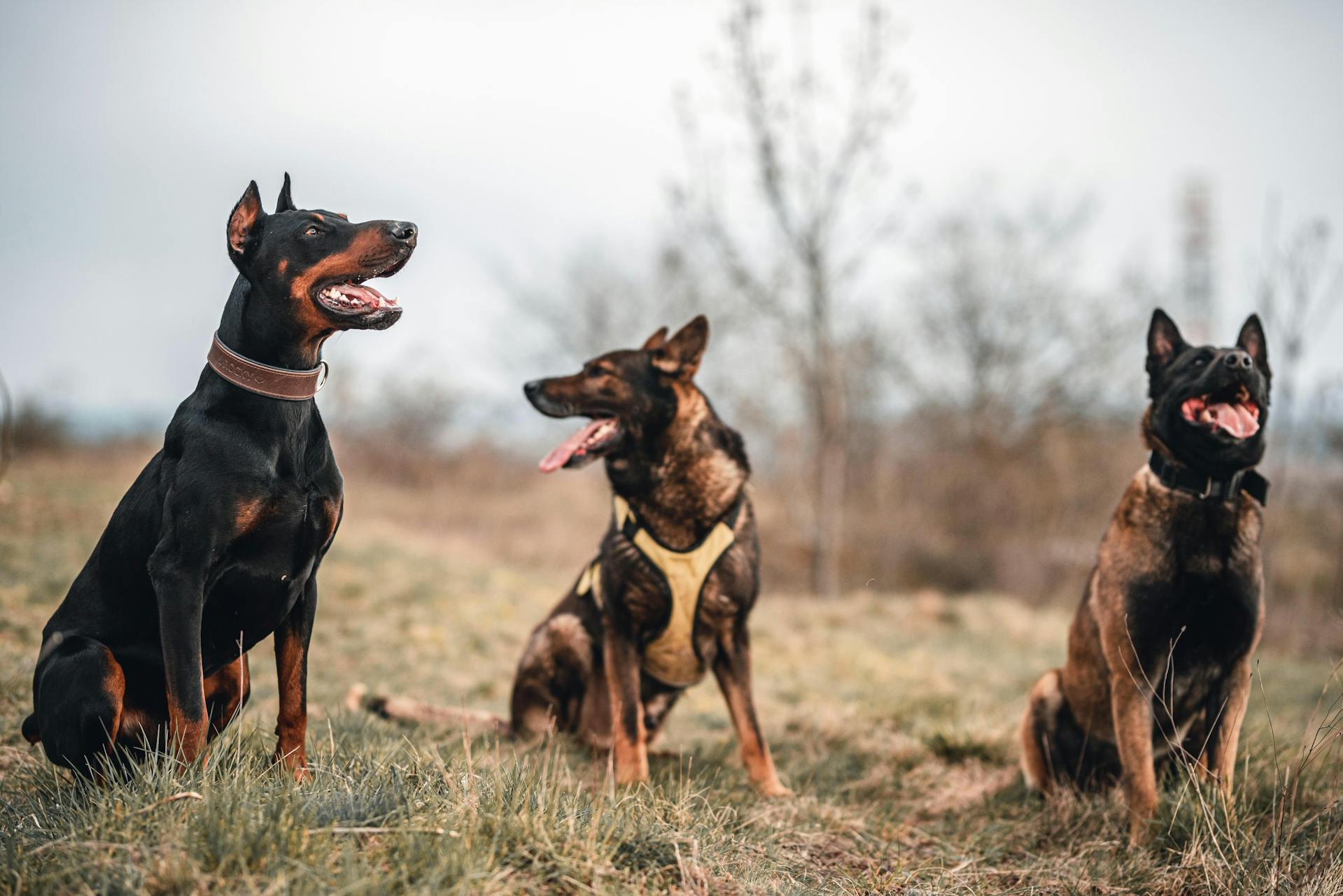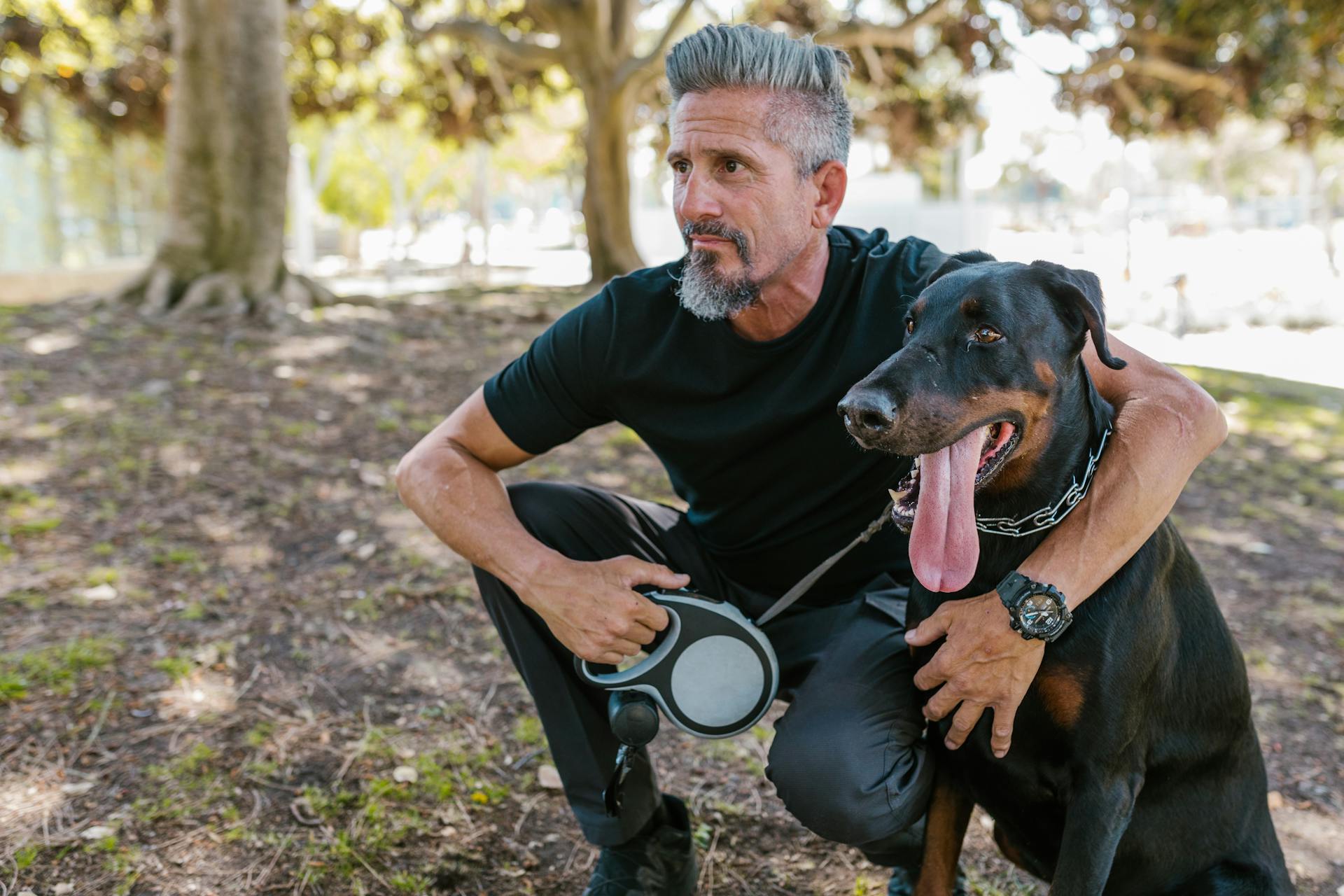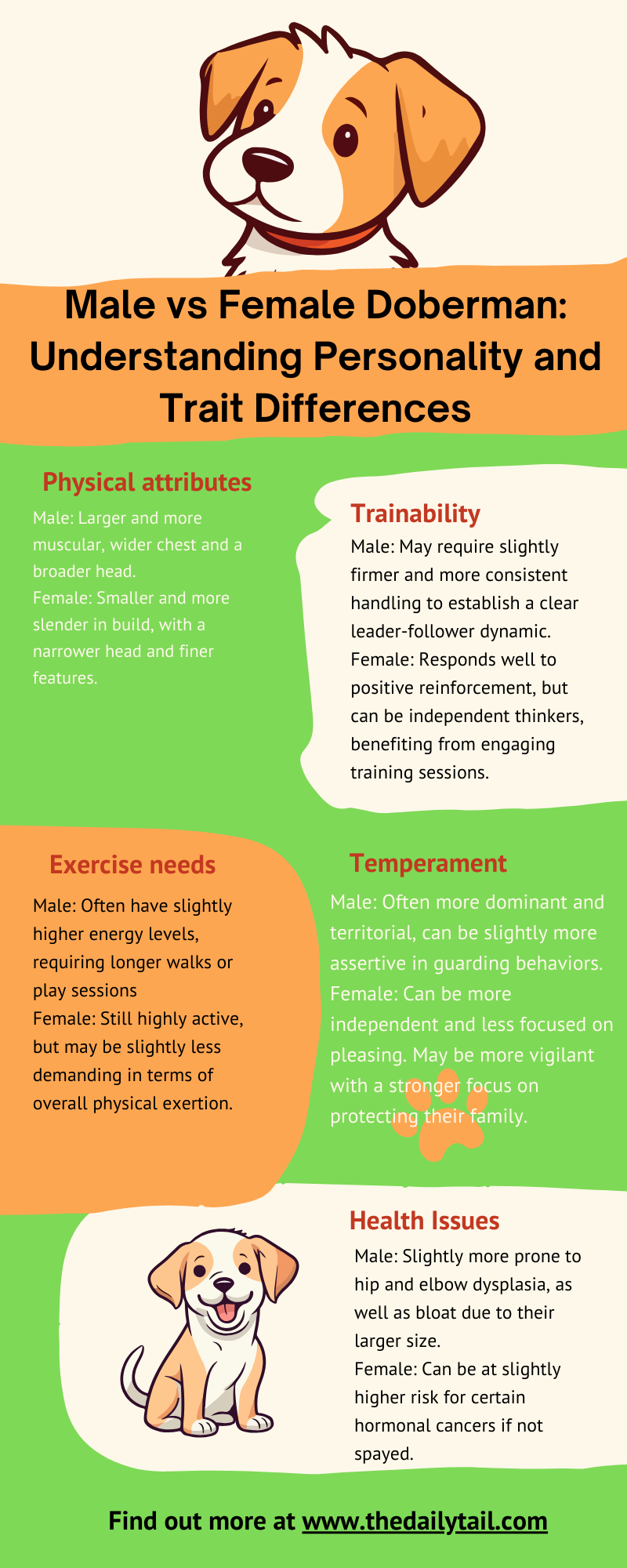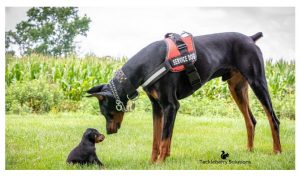When considering adding a Doberman to the family, many potential pet parents weigh the differences between male and female Dobermans. These beautiful and powerful dogs are known for their loyalty and intelligence, but subtle distinctions between the sexes can influence their suitability to a home environment or individual lifestyles.
Male vs female Doberman; it’s not just about who’s bigger. From their guarding instincts to training needs, let’s explore the nuances that matter most. I’ve lived with dogs almost my entire life. And I can tell you, there are some differences between owning a male dog and a female dog.
Male Dobermans often carry a reputation for being animated and playful. They sometimes take up to four years to reach a calmer maturity, while females may settle down around the age of two.
Understanding the physical characteristics of the Doberman is essential as it may affect space and exercise needs.
Males are typically larger, both in weight and height, compared to their female counterparts. This can translate into a difference in strength and presence.
In terms of behavior and temperament, female Dobermans are often cited as more attentive during training, although each dog has a unique personality that can deviate from these general trends. So, what is the core difference between male vs female Doberman dog breed? Let’s have a look.
Key Takeaways
- Males and females differ in size, with males generally being larger
- Females may mature faster and exhibit a more focused attitude in training
- Each Doberman has a unique personality that transcends gender stereotypes
Historical Background
The Doberman breed, known for its loyalty and intelligence, has a past deeply rooted in practicality. They owe their existence to a man named Louis Dobermann, who lived in Germany in the late 19th century.
As a tax collector, Louis often found himself carrying bags of money through dangerous areas. He needed a guardian, not just any guardian, but one with strength and a robust demeanor—something to make the ruffians think twice. So, he set out to create a breed that would be up to the task.
Louis wasn’t a formal breeder with fancy charts and pedigrees. He had a more straightforward approach. He believed in utility and purpose. He mixed breeds that he felt embodied the traits of the perfect protector, probably including the old German Shepherd, Weimaraner, and the German Pinscher.
Imagine Louis scrutinizing each litter, picking out the pups that showed the right mix of strength, intelligence, and, of course, a protective nature.
By the early 1900s, the Doberman Pinscher was not just a local hero in Germany but was gaining worldwide recognition. The breed was formally recognized by the American Kennel Club in 1908.
Those early Doberman dogs were more than just tax collector’s buddies; they were dogs with a job—helping and protecting, and they did it with an innate grace that charmed people around them.
So when we see a Doberman puppy today, standing tall and proud, we’re not just looking at a beautiful dog. We’re seeing a living, breathing piece of history that started with a guy who had a dangerous job to do and a vision of the perfect dog to help him do it. Louis may never have imagined how beloved his breed would become worldwide, but dog lovers everywhere owe him a debt of gratitude.
It is worth noting that some people to this day try to make a difference between an European Doberman and American Doberman.
Physical Characteristics
When choosing a Doberman Pinscher, physical characteristics such as size, weight, and build are often key factors in making an informed decision. Males and females differ in these aspects, presenting unique attributes that might appeal differently to potential owners.
Size and Weight
Male Dobermans typically showcase a heftier build:
- Height: 26 to 28 inches (66 to 71 cm)
- Weight: 75 to 100 pounds (34 to 45 kg)
In contrast, female Dobermans are generally smaller in stature:
- Height: 24 to 26 inches (61 to 66 cm)
- Weight: 60 to 90 pounds (27 to 41 kg)
Coat and Color
Both male and female Dobermans sport a smooth coat that’s easy to maintain. While coat and color are similar across the sexes, males may present a slightly thicker and rougher texture due to their larger size and more muscular form.
Sexual Dimorphism
The term sexual dimorphism refers to the physical differences between males and females of a species. In Dobermans, males possess a more robust and muscular build, contributing to their imposing presence. Females, while also strong, tend to have a slimmer profile, which can be associated with a more refined look.
This distinction is more than just appearance; it’s a reflection of the breed’s divergent roles historically, with each physique tailored to different types of work and activity.
Temperament and Behavior
When considering whether to bring a male or female Doberman into your home, their temperament and behavior are crucial factors.
Male Dobermans are known for being affectionate, energetic, and at times, a bit goofy, often forming a strong, personal bond with their family. Female Dobermans, by contrast, tend to be a bit more territorial and independent, though they’re equally loyal and intelligent.
Personality Traits
Male Dobermans are typically fun-loving and playful, showing a carefree attitude that’s endearing to their owners. Their playfulness often continues until they mature around 4 years old.
On the other hand, female Dobermans generally exhibit a more reserved and calm demeanor, maturing at around 2 years of age.
Protective Instincts
Loyalty is a common trait in Dobermans, regardless of gender. Both males and females have strong protective instincts, making them excellent guard dogs.
Males tend to be more openly affectionate, frequently seeking attention and physical affection. Females may show their protective nature in a less overt, but equally effective manner, being vigilant and alert when it comes to their family’s safety.
Socialization Needs
Both male and female Dobermans have considerable socialization needs to develop a well-rounded and friendly temperament.
Introducing them to various people, pets, and situations from a young age helps mitigate potential aggression and territorial behavior.
Female Dobermans are often seen as more independent, which can translate to them being more selective with their social interactions.
Male Dobermans, with their energetic and loving nature, typically enjoy being the center of attention and are highly social when properly introduced to new experiences.
Training and Intelligence
When it comes to the Dobermans, their training and intelligence are at the forefront of what makes them such esteemed companions.
Both male and female Dobermans are known for their sharp intellect, but they do show some differences in how they learn and interact during training sessions. It doesn’t matter whether you have male vs female Doberman dog breed, both are quite trainable.
Trainability
Male Dobermans often come across as playful and sometimes goofy, traits that can extend to their training sessions.
They may take a bit longer to mature, generally settling into their training around the age of 4. Despite this playful demeanor, males are usually very eager to please, which is a huge plus during training. They respond well to positive reinforcement and consistency.
On the other hand, female Dobermans tend to focus more during training and can be easier to train due to their attentive nature.
They are often ready to engage in more serious obedience training from as early as 2 years old. However, they can also be more independent and less driven to please than their male counterparts, which might come off as stubbornness to some.
| Doberman Gender | Age of Maturity | Training Characteristic |
|---|---|---|
| Male | ~4 years | Playful, eager to please |
| Female | ~2 years | Focused, independent |
With both genders, a clear voice, good commands, and a consistent routine make the training process more effective.
Mental Stimulation
Dobermans, regardless of their gender, possess a high level of intelligence and require ample mental stimulation.
They thrive on engaging activities that challenge their intellect. Puzzle toys, hide-and-seek games, and advanced obedience exercises are excellent ways to provide them with the mental workout they need.
To keep their minds sharp and content, an owner should integrate a variety of mentally stimulating activities into their regular routine.
This prevents boredom and associated behavioral issues. The key is to offer such stimulations consistently and creatively, balancing the Doberman’s physical and mental exercise needs.
Health and Care
When considering a Doberman, it’s important to be aware of the breed’s specific health challenges and maintenance needs.
Caring for a Doberman involves managing their exercise needs, being vigilant about their health issues, and keeping up with grooming routines.
Common Health Issues
Dobermans, both male and female, are susceptible to certain hereditary conditions.
Dilated cardiomyopathy (DCM) is a serious heart condition more common in males, where the heart becomes enlarged, affecting its ability to pump effectively.
Hip dysplasia, a malformation of the hip joint leading to arthritis, is another condition to watch for.
Both genders can suffer from von Willebrand’s disease, a bleeding disorder, as well as bloat, a rapid, life-threatening stomach dilation. Monitoring for these issues is vital for their care.
Exercise Requirements
Dobermans are an energetic breed that thrives on activity. They typically require:
- Daily exercise: At least one hour a day of physical activity like running, playing, or agility training
- Mental stimulation: Puzzle toys and obedience training to keep their minds active
This exercise regimen helps manage their energy levels and contributes to their overall health.
Grooming and Maintenance
A Doberman’s grooming needs are relatively manageable. They require:
- Regular brushing: Weekly to maintain their sleek coat
- Baths: Occasional, depending on how dirty they get
Proper grooming helps to detect any skin issues early on and contributes to their overall well-being. Regular vet checkups and a balanced diet are also components of proper care that can affect a Doberman’s life expectancy.
Reproduction
When thinking about the reproduction of Dobermans, there’s more to it than just the birds and the bees. For those interested in the breeding aspect or responsible ownership of Dobermans, understanding the nuances of reproduction is crucial.
Breeding Considerations
When breeders decide to mate Dobermans, they have to take into account genetic health, the temperament of the dogs, and the breed standards set by kennel clubs.
It’s not just about creating puppies; it’s about ensuring they’re healthy and have the potential to lead happy lives.
- Timing: A female Doberman comes into heat usually twice a year. The ideal time for breeding should be determined in consultation with a vet
- Health Screening: Both male and female Dobermans should undergo health screenings to prevent hereditary conditions from being passed on to puppies
- Puppy Price: The price of a Doberman puppy can vary significantly based on lineage, health clearances of the parents, and breeder reputation
Spaying and Neutering
For those who aren’t into the breeding scene, spaying and neutering become important topics.
- Spaying: It involves the removal of a female Doberman’s reproductive organs. This procedure not only prevents unwanted pregnancies but can also reduce the risk of certain health issues
- Health Benefits: Reduced chance of mammary cancer and no risk of pyometra, a serious uterine infection
- Behavioral Impact: Spaying can help prevent certain undesirable behaviors and can generally be done once a female reaches six months of age
- Neutering: This term is for the surgical procedure in male Dobermans that renders them sterile
- Health Benefits: Neutering a male can prevent testicular cancer and reduce the risk of prostate problems
- Behavioral Impact: It may help reduce aggression and marking behaviors if done at an appropriate age
Both procedures contribute to controlling the pet population and can lead to a more harmonious household.
When deciding on the right time for spaying or neutering, it’s essential to have a chat with your vet, as they might suggest waiting until after a female’s first heat or until a male reaches a specific age.
Choosing a Doberman
When deciding on the perfect Doberman as a family pet, it’s important to consider the unique characteristics of males and females, as well as evaluate the commitment level associated with puppies versus adult dogs.
Male vs Female Pros and Cons
Male Dobermans:
- Pros:
- Playful: They often have a goofier, more playful personality
- Size: They’re larger, which may be preferred for a guarding role
- Cons:
- Maturity: They usually mature by 4 years of age, often later than females
- Energy: May be too boisterous for some
Female Dobermans:
- Pros:
- Companionship: Often considered more loyal, forming strong bonds with family members
- Calmness: Tend to settle down around the age of 2
- Cons:
- Size: Smaller in stature, which might influence their role in a family
- Space Needs: They require enough space to match their high energy when young
Puppy or Adult?
Choosing between a puppy and an adult Doberman hinges on factors like time, patience, and lifestyle.
Puppies:
- Require extensive training but offer the opportunity to mold their behavior and personality from an early age, which can foster a deep, lasting bond
Adults:
- Tend to be calmer and may be already trained, which suits a family looking for a lower-maintenance pet. This option might be more appealing for those who appreciate predictability and have a clear understanding of the dog’s temperament
Real-Life Experiences
In exploring the real-life experiences with Dobermans, individual stories often reveal how these dogs behave as companions and protectors in various settings. Owners share firsthand accounts of their Doberman’s characteristics, shedding light on how they interact as family pets and guard dogs.
Owner Anecdotes
Dog owners of male and female Dobermans often note distinct personality traits. They describe male Dobermans as playful and goofy, mentioning how these traits contribute to a fun-loving household atmosphere. A common observation is that males tend to mature slowly, settling down around 4 years old.
Conversely, female Dobermans are frequently cited as calmer and more maternal, usually reaching a stage of tranquility around the age of 2.
- Companionship:
- Male Dobermans are often described as loyal friends, bonding closely with their families
- Meanwhile, female Dobermans are typically seen as watchful guardians of the home
- Interaction with Children:
- Male Dobermans might be too boisterous around small children without proper dog training
- On the other hand, female Dobermans are generally gentler but still require supervision to ensure safety
Male vs Female Doberman Behavior in Different Settings
The behavior of Dobermans can change depending on the environment and the presence of other dogs or strangers.
Many Doberman owners find their companions to be adaptable, intelligent, and active. Both males and females enjoy being part of an active family routine.
| Setting | Male Doberman Behavior | Female Doberman Behavior |
|---|---|---|
| Home | Male Dobermans are often laid-back and affectionate with family members. | Female Dobermans tend to be alert and observant, watching over the household. |
| Dog Parks | They can be exuberant, sometimes requiring careful introduction to other dogs. | Female Dobermans are usually more reserved, assessing other dogs before engaging. |
| During Walks | Male Dobermans are likely to be curious and adventurous, wanting to explore. | Female Dobermans are typically focused, staying close to their companion. |
| With Strangers | They are usually friendly after an initial assessment period. | Female Dobermans may remain wary around strangers, sticking close to their owner. |
Regardless of gender, Doberman Pinschers are often highlighted as intelligent and protective breeds. They excel as guard dogs without compromising their roles as affectionate family pets.
However, they require a firm, consistent hand in training to ensure their protective behaviors are well-managed and appropriate to the situation.


